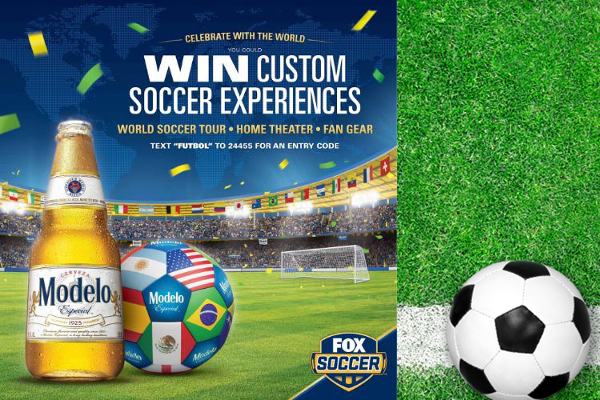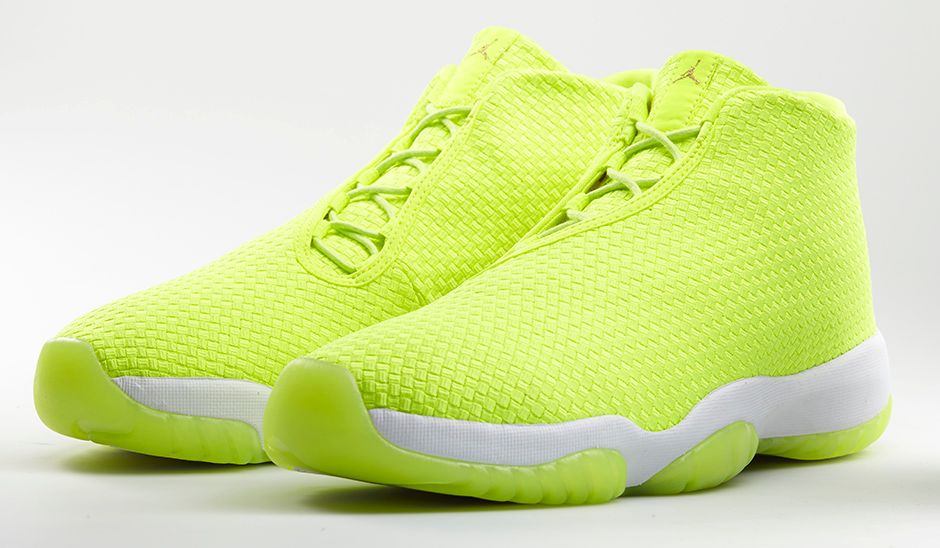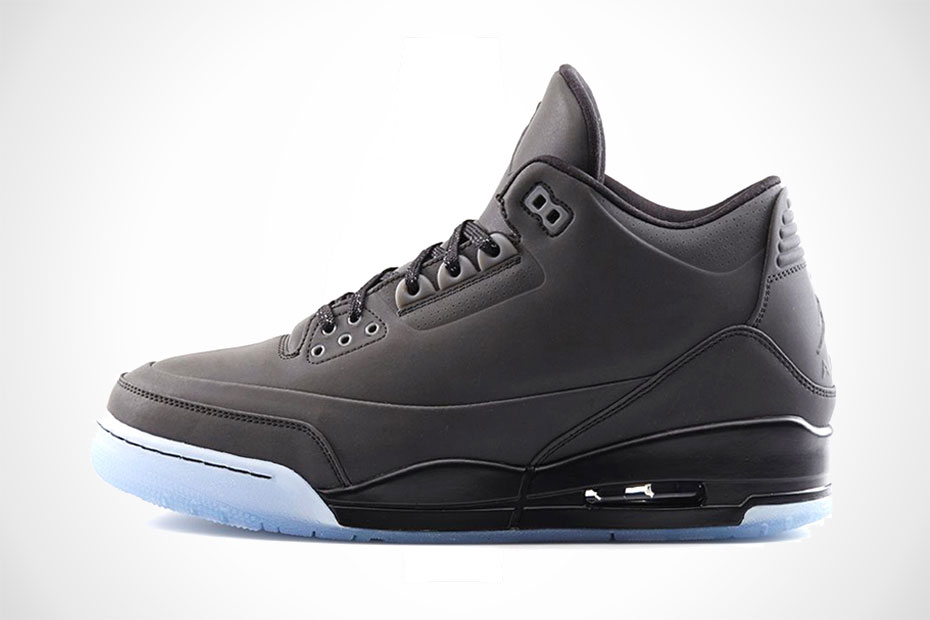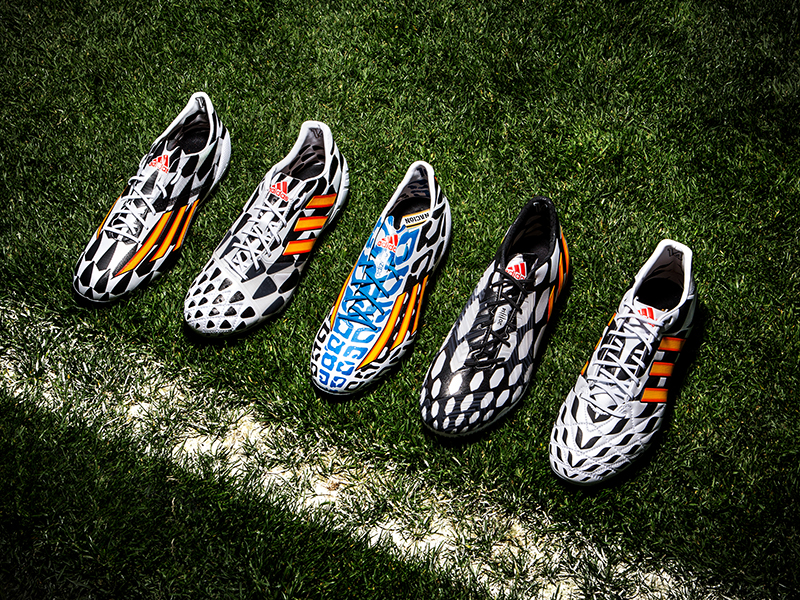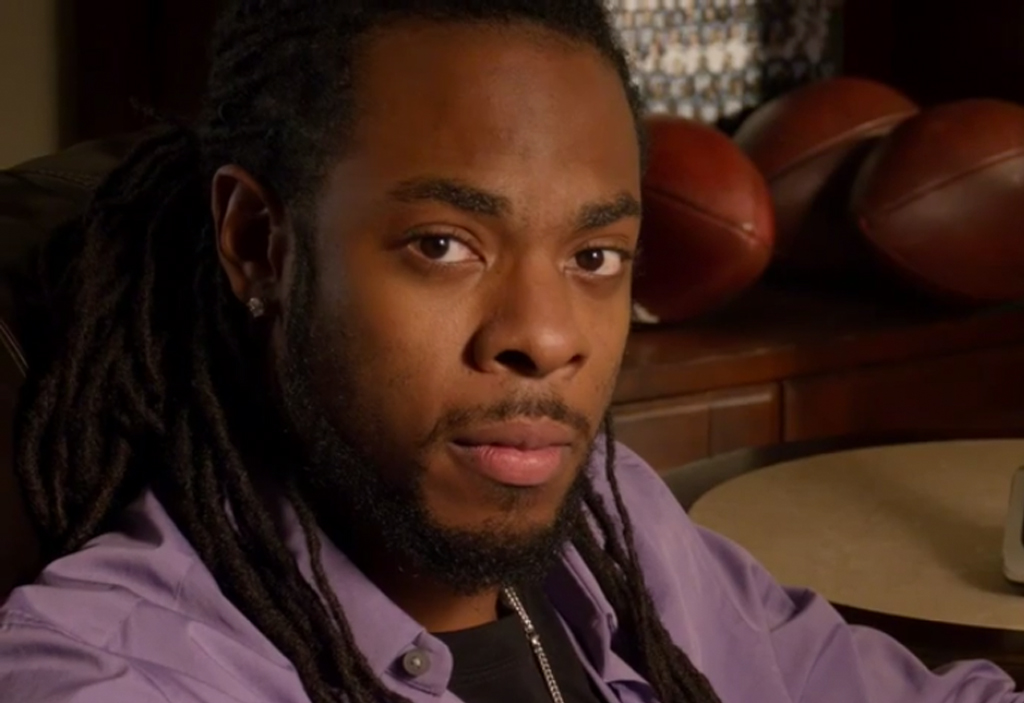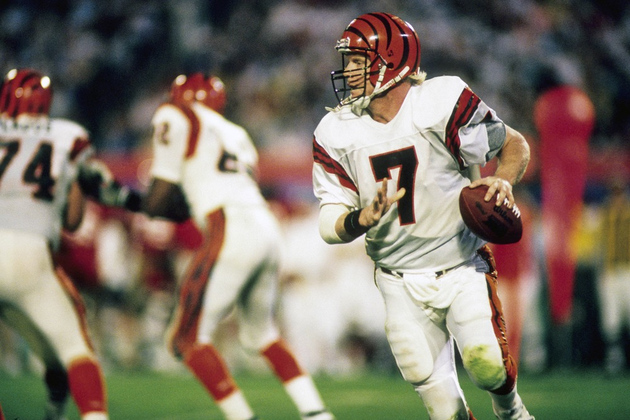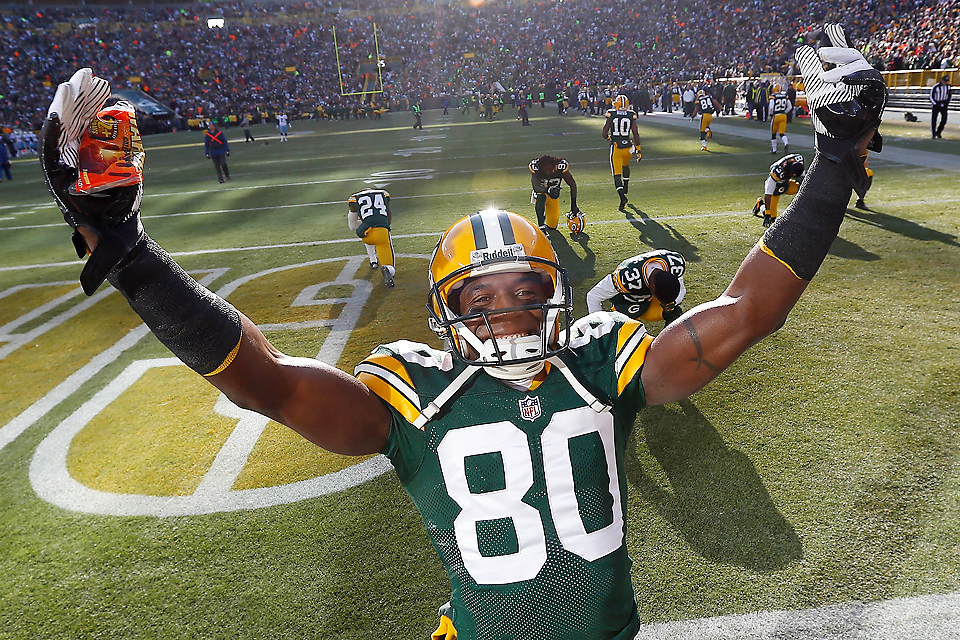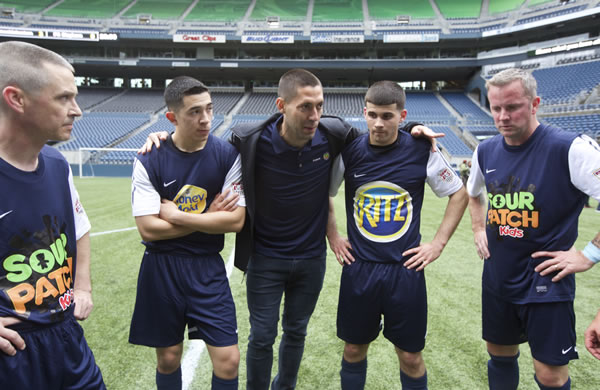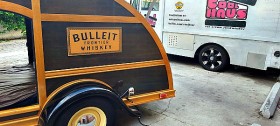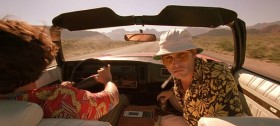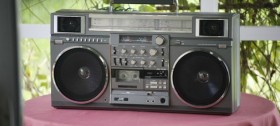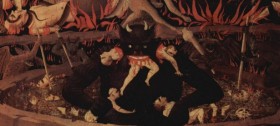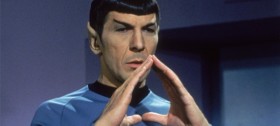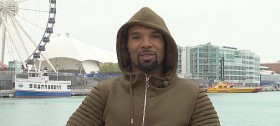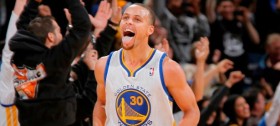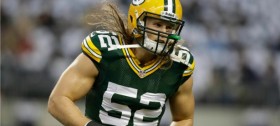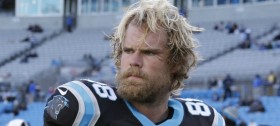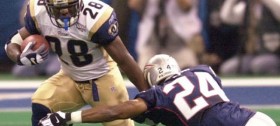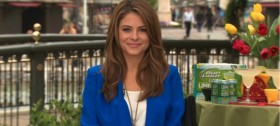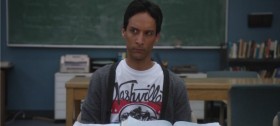Sports

Modelo Especial & Clint Dempsey Are Looking To Hook You Up
To celebrate a summer of world-class soccer, Modelo Especial invites us to “celebrate with the world” by kicking off a one-of-a-kind soccer experience sweepstakes that offers a grand prize winner a trip to three world soccer destinations. American soccer star Clint Dempsey has teamed up with Modelo Especial to encourage fans to experience the beautiful game.
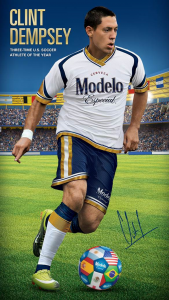 Fans of Modelo Especial, soccer and its world tournament are eligible to win one of three unforgettable prize packages of their choosing by purchasing Modelo Especial, including: acustomized home theater system, customized fan gear,a grand prize custom tour to three world soccer destinations, visiting the winner’s three favorite soccer-playing cities from a pre-determined list.
Fans of Modelo Especial, soccer and its world tournament are eligible to win one of three unforgettable prize packages of their choosing by purchasing Modelo Especial, including: acustomized home theater system, customized fan gear,a grand prize custom tour to three world soccer destinations, visiting the winner’s three favorite soccer-playing cities from a pre-determined list.
Consumers can enter the sweepstakes via in-pack or text-to-win codes.
Dempsey appears in a 30 second TV commercial produced by FOX Sports that will air across FOX Sports network and digital platforms this summer.
“It is pretty surreal to be able to play soccer on the world’s biggest stage and to support Modelo Especial’s enthusiasm for this sport,” said Clint Dempsey, midfielder for the U.S. men’s national team. “Sports, and soccer in particular, have the power to bring distant cultures and people together. This summer, the games in Brazil will demonstrate that power like no other sporting event can.”
Modelo Especial is available at retail locations nationwide. To learn more about Modelo Especial and the sweepstakes, visit www.ModeloSoccer.com.
May 14th

Lexus Gets You Ready For The U.S. Open
Golf is about always pursuing perfection and Lexus and the USGA share that goal. For the past 7 years, Lexus has been the official vehicle of the U.S. Open Championship in partnership with the United States Golf Association (USGA®). Lexus will provide over 400 courtesy vehicles to players, USGA professionals and associates throughout this year’s tournament.
In anticipation of the 2014 Championship, Lexus will ask golf fans to vote on their favorite moment in U.S. Open history. We have pre-selected eight highlights (including Tiger Woods 2008 win at Torrey Pines despite a broken leg) and the multiple choice survey which you can take right here!
May 12th

Jordan Brand Releases The Future
Paying tribute to the symbiotic relationship between the court and the street, the Jordan Future blends one of the most iconic designs with a one-piece woven upper to create an entirely new look. The deconstructed upper forgoes a heel counter and toe enforcer for a futuristic, minimalist style.
The Future gets bright with a blast of Volt on the one-piece woven upper and full-length Air outsole. Stand out in the latest colorway of the Jordan Future. Available on Nike.com May 17.
The newest colorway in the Air Jordan Elements collection, the Air Jordan 5Lab3 combines the body of a classic Air Jordan 3 with the iconic reflective elements of the Air Jordan 5. This model’s all-black, smooth upper fully reflects light. Just like the Jordan Future the 5Lab3 will be available on Nike.com on May 17 at 8am EDT/5 am PDT.
May 12th

adidas Unveils 2014 World Cup Battle Pack
A month before the 2014 FIFA World Cup kicks off, adidas today unveiled the Battle Pack cleat collection. adidas Battle Pack features a new cleat from the brand’s five silos including Lionel Messi’s signature adizero F50, the latest Predator, Nitrocharge, 11Pro and adizero F50, each with its own disruptive black and white pattern.
Every adidas player will wear Battle Pack during the 2014 FIFA World Cup including Messi, Mesut Özil, Dani Alves, Luis Suarez, Oscar, Philipp Lahm, Karim Benzema, Javi Martinez and Jozy Altidore.
The unique black and white design of Battle Pack is inspired by the war paint of native warriors and features gold stripes representing the FIFA World Cup trophy. Messi’s Battle Pack signature adizero F50 includes a blue and white pattern to celebrate the Argentina federation.
The adidas Battle Pack debuts on field for the first time during the UEFA Champions League Final in Lisbon on May 24. The collection will be available via pre sale on May 12 at www.adidas.com and hits stores on May 26 at www.adidas.com, adidas sport performance, sporting goods and soccer stores.
Fans can join the conversation on Twitter via @adidasSoccer #WorldCup or at www.facebook.com/adidasSoccer.
Lionel Messi’s signature adizero F50 combines revolutionary technology with the precision engineering of the four-time Ballon d’Or winner. At only 5.3 ounces the adizero F50 Messi is one of the lightest cleats in the game. In addition to the black and white design, Messi’s World Cup cleat features a blue and white pattern to celebrate his Argentina federation.
PREDATOR
The 20th anniversary Predator, the Battle Pack version includes the five control zones and provides a new focus on the sixth zone, the outsole of the cleat, through control frame technology. Worn by Mesut Özil, Oscar, Fernando Torres and Graham Zusi.
NITROCHARGE
adidas’ energy cleat, Nitrocharge includes a specialized highly elastic ENERGYSLING around the forefoot that supports side cuts and precision turns to sharpen reactions on the field. adidas’ ENERGYPULSE spring technology provides strong push offs for players while they sprint. Worn by Dani Alves, Daniele De Rossi, Javi Martinez and Omar Gonzalez.
11PRO
The 11Pro provides maximum comfort and improved touch for players. A newly designed outsole with conical studs and a comfort frame provides better pressure distribution and a TPU overlay minimizes ground impact. The 11Pro features an updated upper that uses memory foam embedded into the quilted Taurus leather upper. Worn by Philipp Lahm, Frank Lampard and Sacha Kljestan.
ADIZERO F50
Built for speed, the 5.3 ounces adizero F50 features SPEEDTRAXION, a new, high speed stud alignment that maximizes acceleration and traction, and SPEEDFOIL, a revolutionary material that combines lightweight, softness and durability for a comfortable, yet locked down heel fit. Worn by Luis Suarez, Arjen Robben, Karim Benzema and Jozy Altidore.
May 12th

Ken Griffey Sr. Chats With MANjr.
One of the greatest memories I have with my dad is playing football outside in the backyard. He would throw me passes and I would run to go get them. Playing sports with my dad was such a fun experience. Now picture playing with your dad at the professional level.
One duo can say they did that as they both played baseball in the Major Leagues. That duo is none other than Ken Griffey, Sr. and Ken Griffey, Jr. In 1990 they got to play together for the Seattle Mariners. They made history by becoming the first father and son combination to hit back to back home runs.
Ken Griffey Sr. recently had his book “Big Red: Baseball, Fatherhood, and My Life in the Big Red Machine” hit store shelves and is also available as an e-reader. This book is a great read no matter if you are a sports fan or not. His book chronicles him growing up, playing baseball, and the life lessons he learned along the way. You get to hear the two time World Series champion’s take on baseball, fatherhood, and life.
Art Eddy: Let’s talk about the book, “Big Red: Baseball, Fatherhood, and My Life in the Big Red Machine.” What inspired you to write this book? 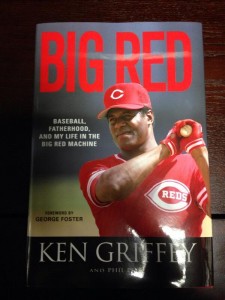
Ken Griffey, Sr.: I have been thinking about it for the last ten years when I got out of baseball. Knowing the fact that things for me and Junior was something different and something new, especially when we got a chance to play together and hit back to back home runs together. Plus all the things that happened to me during the Big Red Machine years and in New York made me decide to put all of that down on paper and see how it comes out.
AE: What were some of the topics you wanted to make sure were in this book?
KG: Well the topics for the Big Red Machine for one. Plus the topics with the Yankees. A lot of people really don’t understand why Junior wouldn’t play for the Yankees. That was one of the reasons that I put things in the book about that. Plus just a little bit of tidbits of stuff.
There was stuff about my relationship with George Foster and how well we got along the first year when he got sent down from the big leagues to Triple A. There were a lot things that were involved with that. I just hope people enjoy reading this book.
AE: Your book is very interesting. I loved learning about your transition from high school to possibly going to college or going to work to help out your family. With all the different ways your life could have gone it looks like things worked out just right for you?
KG: Well it did. It was a strange scenario. I had the opportunity to go to a few colleges on a football scholarship. A couple of them were basketball scholarships, but not many baseball scholarships. We didn’t play that much baseball in terms of high school ball in Pennsylvania because of the weather.
So it was a situation where I had to make up my mind to help the family. My mother raised five boys and one girl by herself. It was a burden on her. It was tough. So I had the opportunity to do that. I decided to make money as soon as possible to help her out as much as possible. Even though I couldn’t do that much with 500 dollars a month, but I figured out if I worked hard enough eventually I would be able to help her.
AE: Switching to baseball. You have so many great moments that happened in your career. You won the World Series twice, won the MVP award for the All-Star Game, and played with your son. Is there a moment that tops the rest?
KG: There are a few moments really. One that stood out more than others was getting the opportunity to play with Junior. We went on the field together on August 31st in 1990. The scenario as tough for me to get there to Seattle after I retired and looked at the whole thing. Bill White called to tell me to sit still and don’t move. The thing is if you retire you have to wait 60 days before you can be reinstated. The biggest issue with that this was at the end of August. We only had 31 days before the season was over.
Tim McCarver had mentioned this on television. He said that would be a story and a half if he had the chance to go play with his son. That’s when he mentioned I had to wait 60 days. Bill White called about an hour later and told me that he would let me know what happens. He called me back. He said call Marge Schott and thank her. You are on your way to Seattle. Getting the opportunity to play with Junior was the highlight of my career.
AE: I love watching the replay of you and your son hit back to back home runs back in game in 1990. Take me back to that moment and tell me what you remember from that game? 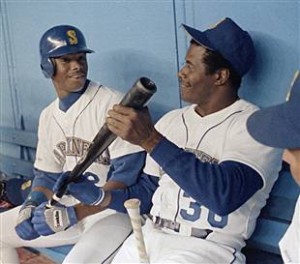
KG: I remember Harold (Reynolds) being on first base. I hit a home run to left-center field. So I am rounding third heading home. The first one that is going to meet me is (Junior). Looking into his eyes I see a difference in him. It was a transition. I knew his concentration level was sky high. After he gave me a high five he got in the batter’s box.
Harold Reynolds and I were talking on our way back to the dugout. He says, ‘You know if he hits this home run it will be the first time a father and son ever did it.’
I didn’t think of it that way. I guess Harold and Junior had been talking about it. That is what happened. When he went to 3-0 I didn’t think he would have a chance. He hit a fastball or a sinker low and away. He hit it to left-center field. Dante Bichette in left field was like, ‘You gotta be kidding.’
It was an amazing night for both of us. When he got to home plate he was looking for me the whole time. He was grinning from ear to ear. That was such a fun time when he was just grinning at me. He gave me a big hug. I was like oh my God, he did it. All the pressure was on him. He was a stud. He was the man.
http://www.youtube.com/watch?v=_G2AnNdjBu4
AE: That was such a great moment. To hear it from you is amazing. For you was there a team or player that would get you more pumped to play against?
KG: I used to get pumped up against every team. It didn’t make a difference. It didn’t matter the team or the player. It was just the idea of getting the chance to play baseball and being competitive. That was most important to me. It didn’t matter. I was very competitive. Visit our partners’ website – https://www.sexualorientation.info/ . Very interesting and exclusive content. I didn’t care who I was playing against. Even though I might do research on certain pitchers, like a Tom Seaver or a Steve Carlton it still didn’t matter. I was just thrilled to be able to play.
AE: Are you a fan of instant replay being added to the game?
KG: Well, I am still old school I guess. I like the idea of where there is a mistake made by the umpire of a safe or an out call or something of that nature. Let it stick. The game is human. When you start adding instant replays and all that stuff it makes it a bit more mechanical and longer. Now you have to stop the game and decide what is going on. Is it fair or 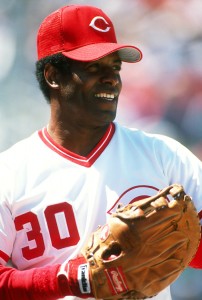 foul and all of that.
foul and all of that.
Years ago they would tell us that we need to speed up the game because it was too slow. In the Minor Leagues it is funny because they tell you that you can’t get out of the box unless you break the bat or it slips out of your hands. You can’t get out of the box to get more pine tar so it is a little strange.
May 12th

Waiting For The Call On Draft Day
Every pro football player remembers what it’s like to receive “The Call.” That suspenseful moment when you wait to hear your destiny as a lover of the game. It’s the moment on which everything hinges. Pro football champion Richard Sherman has an inspirational congratulatory message for the young men who will make the cut this year. At Oberto, they believe what you put in your body and your life directly affects what you get out of it. That’s why their tasty all natural beef jerky has no preservatives or artificial ingredients.
As Richard Sherman says, “Big day for the guys in the draft. It doesn’t matter if you are the 1st or the 254th.”
#YouGetOutWhatYouPutIn.
May 7th

Boomer Esiason Chats With MANjr
Boomer Esiason played 14 great years in the NFL. He played for a total of three teams, the Cincinnati Bengals, the New York Jets, and the Arizona Cardinals. In 1988 the four time Pro Bowler won the NFL MVP award. Even after retiring from the game, Esiason is still making an impact on the NFL.
Boomer can be seen during the football season on CBS breaking down the game. He also is on the radio as a color commentator for Monday Night Football. He even has a morning show on a New York sports radio station called “The Boomer and Carton show.”
Yet if you ask Boomer what he is most proud of, he would probably say all the work he does through his organization, The Boomer Esiason Foundation. The foundation looks to support and improve the lives of those who have Cystic Fibrosis. His son, Gunnar was diagnosed with Cystic Fibrosis in 1993. Boomer used his popularity to raise awareness for the disease to not only help his son, but other children who have CF.
I had the great pleasure of talking with Boomer about his foundation, his time in the NFL, and more.
Art Eddy: You played 14 years in the NFL. What sticks out the most to you from your great career in the league?
Boomer Esiason: Well for me and I think most of the players will tell you the same thing. It is really the relationships that you develop when you play for different teams. Now for me I played in three different cities, in Arizona, New York, and Cincinnati. You develop these close relationships with coaches, players, and front office people. Those are the memories that you hold on to for a lifetime. Even when you are going through tough times Art. Whether it be a bad season with the Jets or Bengals or going to the playoffs and Super Bowl, or throwing for over 500 yards in a game with the Cardinals I always say the positive memories always outweigh the negative ones.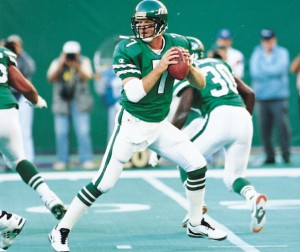
When you play 14 years there will be all sorts of emotions that you are dealing with. For me I always think back to all the great relationships that I was fortunate enough to make. It wasn’t just for what the NFL did for me as a player, but as a person too. In my world now with broadcasting I don’t think I would be doing what I am doing if it wasn’t for the 14 years I spent in the NFL.
AE: From watching you on the field and now hearing you breakdown the game on TV and the radio I know that you have a team mindset, but winning the MVP in 1988 had to be up there as one of the all-time greatest moments for you right?
BE: It was, but it was also a little bit embarrassing. I used to say back then and I say it today. An MVP award in an ultimate team sport like football really doesn’t make any sense.
I am a voter for the MVP award now that the AP gives out. I take that vote pretty seriously. This year it happened to be Peyton Manning. He would be the first to tell you that he wasn’t able to accomplish the things in his five MVP seasons without the teammates and coaches he goes to work with every day. That is how I felt when I won my MVP. While it is certainly displayed proudly in my home I will tell you that I owe a lot to the players and coaches in 1988 when I did win that award.
AE: Not that many people get a chance to play quarterback in the NFL. I think the role of the quarterback is one of the hardest positions in all of sports. As a fan of the league can you walk me through what you experienced as a quarterback?
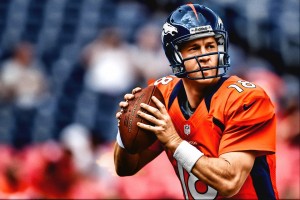 BE: It is an amazing responsibility. I take the upper echelon of the quarterbacks today like (Tom) Brady, Manning, (Drew) Brees, (Aaron) Rodgers, and (Ben) Roethlisberger. They are on a different plane than the bottom half of the league.
BE: It is an amazing responsibility. I take the upper echelon of the quarterbacks today like (Tom) Brady, Manning, (Drew) Brees, (Aaron) Rodgers, and (Ben) Roethlisberger. They are on a different plane than the bottom half of the league.
The reason that they are on that plane is that they not only understand how the game is played on the field, but how to carry themselves in the locker rooms and in the meeting rooms. Not only do the put accountability on their shoulders, but they hold their teammates accountable. They do that by more with their actions than words.
When the team wasn’t doing well the last thing that my team wanted to hear from was me. So I would go out and practice harder. I would try and challenge players on the practice field. Hopefully that would turn up on Sunday or Monday night when we were playing into a winning football game.
I always say that about quarterbacks. It is certainly about how you can communicate verbally, but it is really your ability to communicate through your actions. That is when you don’t need words to describe what you are doing or what you are trying to get done. Other players will react to that. That to me is the genius of one Peyton Manning.
AE: During your career when the game was on the line did you have a go to guy that you knew would deliver?
BE: Well yeah you do. It is somebody that you really, really feel comfortable with. For me I had a couple of those guys. It was Cris Collinsworth and Rodney Holman back in my days in Cincinnati. When I was with the Jets it was with Rob Moore. Fortunately for me I had Rob Moore as a receiver in Arizona too.
When I went back to Cincinnati there were younger players that I really didn’t know that much about. I knew that I could have a profound impact on their careers by doing what I just said. I would show them how to prepare and how to use that preparation on the field and turn it into a success.
When I think back about my last year in the NFL I had a running back who was a rookie that year. He had a phenomenal rookie year. That rookie was Corey Dillon. I think about how Corey Dillon became a great running back in the NFL. I hope in some small way that I helped him become a success in the NFL. After I retired Corey continued to have a great career and even won a Super Bowl with the New England Patriots.
That is what I think quarterbacks are known for by helping players become great. Hopefully when people think of me that they will say that I had an impact on their career to make them successful in the league.
AE: During football season people can see and hear you pretty much everywhere. You are on TV, the radio for Monday night football, and you have a morning talk show on the radio as well. You do a great job breaking down the game. With that you are very busy during the NFL season. I do have to say though you must have great time management skills.
BE: (Both laugh) I guess so, but I love the fact that people feel good about me to employ me in such high profile jobs. I will never ever take for granted the opportunity to speak about something that I love so much. The NFL has been great to me.
Covering the NFL is the ultimate for a football junkie like myself. I don’t have to coach. I don’t have to be a general manager. I don’t have to make those fourth and one decisions that a (Bill) Belichick or a Tom Coughlin have to make. Then on Sunday or Monday I can sit in judgment about those decisions and be able to sleep at night and not worry about it with any repercussions. (Both laugh.)
AE: Your son Gunnar was diagnosed with Cystic Fibrosis in 1993. You and the many great people at your foundation have done so much for the CF community. For those who don’t know too much about your foundation can you give an overview? 
BE: I was actually exposed to Cystic Fibrosis in 1989 by Frank Deford. Frank was speaking at a banquet that I was at. He had lost his daughter Alex to Cystic Fibrosis. Cystic Fibrosis is a genetically transmitted disease. My wife and I didn’t know that we carried the recessive gene trait.
The disease itself involves the lungs and the digestive system. The lungs are marked with bacterial infection. Saying all of that when Gunnar was diagnosed in 1993 at the age of two when I became the quarterback of the Jets the second phone call I made was to Frank Deford. He was just as shocked as I was that destiny and irony had found our family when Gunnar was diagnosed with the disease that ultimately killed his daughter.
He said that this was God’s way of saying that we have an opportunity here. To use your celebrity in New York to raise funds and awareness for Cystic Fibrosis. I have never ever not taken that piece of advice as seriously as it deserved to be taken. I feel really strong after 20 years of watching Gunnar grow up and graduate from Boston College that we have taken Frank’s ideas and trying to create a world for Cystic Fibrosis patients to live a healthy, normal, and productive life as any child in the world.
I can say that watching Gunnar fight this disease every day that I am most proud as a dad of what he has already accomplished in his young life. I want him to become a father himself. As any father can attest to that there is nothing more fulfilling and greater than becoming a father. So for me we are trying to make a difference in the lives of Cystic Fibrosis patients. Gunnar is a prime example of that. I think we have accomplished our mission, but the ultimate goal is to cure this disease but we are still a ways from that.
AE: How has research and medicine evolved since the early 1990s?
BE: Well a number of things have come to fruition. First and foremost if people want to find out more about Cystic Fibrosis they can go to our website at Esiason.org or they can go to the National Cystic Fibrosis Foundation website, which is CFF.org.
In the past 20 years we have raised the median age. The average lifespan with Cystic Fibrosis was from 19 to now 37. Which in a greater understanding of the disease there are better ways to handle the symptoms of the disease. Lung transplants are more commonplace than ever before. We ask people and beg people to become organ donors because you never know when you can have the positive impact on somebody else’s life. You can give them a second chance at life, which I have seen and lived through many times over in the world of Cystic Fibrosis.
The drug from the patient to the test tube has been fast and furious over the last 20 years. There have been at least six or seven new therapies that Gunnar and all Cystic Fibrosis patients have been benefitting from. There is a better understanding of the disease, the symptoms of the disease, and the drug delivery in terms of the types of infections these kids are dealing with.
Even though it is not easy living with Cystic Fibrosis as Gunnar has proven and many young adults like him have proven it is an attitude that you have to have. You got to be positive. You got to be realistic. You got to be aggressive in dealing with the disease. That is one of the reasons that we are seeing kids live a lot longer. We are seeing female CF patients being able to deliver their own babies and becoming moms themselves. It is really becoming quite the story.
We have a number of CF patients that run in marathons. The story of triumph in the world of Cystic Fibrosis has really been nothing short of a miracle thus far. We continue to see miracles each and every day. We are going to continue to fund the research, college scholarships, lung transplant grants, and every other aspect of Cystic Fibrosis that we can improve we will continue to do.
May 5th

Donald Driver Talks With MANjr.
Donald Driver didn’t just make an impact in the NFL, but he did off the field as well. Growing up as a kid Donald and his family faced tough times. Driver took that adversity and used it as motivation to create a better life for himself. Football fans know the mark he left not only in Green Bay, but throughout the league. The four time Pro Bowler helped the Packers win Super Bowl XLV in 2011 as Green Bay beat the Pittsburgh Steelers 31-25.
The Green Bay Packers Receiving Yards All-Time Leader also won the Ed Block Courage Award. This award is given to players, who are voted by their teammates as role models of inspiration, sportsmanship, and courage. Driver continued to inspire people when he created the Donald Driver Foundation in 2001. The foundation helps families find homes, assists in educating kids, and helps recognize those people who do wonderful things in their community.
Driver is an accomplished author as well. His book “Driven” was on the New York Times Best Sellers list. He has also written three children’s books. Each book focuses on a challenge a kid or an adult may experience in life. He will have another children’s book out later this year called “Quickie Handles a Bully.”
Art Eddy: Many players who get drafted in the late rounds have chip on their shoulder. How much of a factor was that for you to prove that to the teams that passed on you that they made the wrong choice picking someone else?
Donald Driver: In 1999 when I got drafted that was the first thing I did. Teams told me that they were thinking about drafting me the first day. Then they would say we would draft you the second day and you shouldn’t go no later than the fourth round.
So when all these teams are calling you to tell you that they are going to draft you, but you sit there during the draft at home with your family and the first day goes by and you don’t get picked up. The next day comes and you don’t get picked up again and you basically think your career is over.
Now you have to go and find a normal job. I had that chip on my shoulder. When the Green Bay Packers called me in the seventh round after 32 receivers got taken before me I just wanted to prove to the league and to the other teams that they made the wrong choice. They should have drafted me earlier. The Green Bay Packers took a chance on me and that is why I was able to retire with them and give them a legacy instead of another team.
AE: Can you describe your emotions and memories from your first NFL game?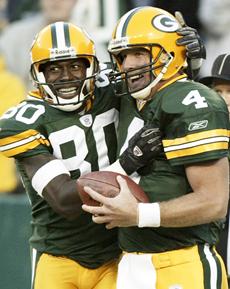
DD: Oh wow. My first memory that I actually made it in the NFL was our first family night scrimmage in Green Bay, Wisconsin. I remember Brett (Favre) sitting down with me and telling me that this wasn’t Alcorn State University where you only have 20,000 people. It is going to be about 60,000 people in those stands.
I remember walking out that tunnel just for that family night scrimmage, offense versus defense and there were 57,000 fans in the stands. They were yelling and screaming. From there I was just going nuts. I remember Brett and I walking out of the tunnel and he said to me, ‘Hey Drive, welcome to the NFL.’
I had an amazing practice that week. I was catching everything. I think from there it solidified my opportunity to make it on the Green Bay roster.
AE: As fans of the game we all know that Lambeau Field is one of the most iconic stadiums in all of sports. For you who played there, what does Lambeau Field mean to you?
DD: It means everything. If you never had the chance to experience Lambeau you should go to a game. I don’t care if it is a cold game or a hot game. You want to be there. You want to experience the atmosphere. The fans have been great throughout my entire career.
They have proved to me that they have shown their loyalty to me. For me it was to show my loyalty back to them. They have been supportive through my charity, through my family, and to be the person that I am today. I have always said this. My fans have put me on a pedestal. It wasn’t me playing that put myself on that pedestal. When they put you on a pedestal you always have to remember that you are no better than they are.
AE: Who does the best Lambeau Leap?
DD: You know I think a lot of people have given me that title. They say I do the best Lambeau Leap because one time I remember playing the Detroit Loins at home. I scored a 60 or 70 yard touchdown. I ran and I looked up and I saw the Detroit fans. When I jumped up they were trying to catch me. So I jumped down and then took two steps over and then jumped back up. (Both laugh.) I went back into the Packers’ fans hands and I stuck my tongue out at the Detroit Lions fans. It was a great, great time. It was an amazing experience.
When I scored my first touchdown I had no clue that everybody should do the Lambeau Leap. I 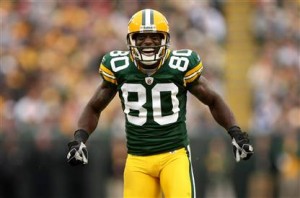 thought it was just LeRoy Butler’s thing. I didn’t want to step on his toes. So I didn’t do it when I scored my first touchdown at Lambeau. I remember getting to the sideline and so many guys gave me grief. They told me that the next time I score I better do the Lambeau Leap. Since then every time I scored I would do the Lambeau Leap.
thought it was just LeRoy Butler’s thing. I didn’t want to step on his toes. So I didn’t do it when I scored my first touchdown at Lambeau. I remember getting to the sideline and so many guys gave me grief. They told me that the next time I score I better do the Lambeau Leap. Since then every time I scored I would do the Lambeau Leap.
AE: What was the toughest part about playing in the NFL?
DD: For me it was just the speed of the game. Coming from Alcorn State, college is just a different atmosphere. The speed of the game is just so much faster. So I wanted to make sure when I got there I just learned and learned. I would sit back and learn from all the veteran guys and took what they said.
They told me that I needed to stay focused and make sure to make every play count. The opportunities are slim. In college you could always make it up. In the NFL it is hard to do. They taught me that. I was able to use that year after year.
AE: Which safety or cornerback challenged you the most? Who did you love to play against?
DD: I will say this. I played against a lot of great corners. Antoine Winfield, Champ Bailey, Deion Sanders, Kevin Smith. I mean the list goes on and on. DeAngelo Hall, Charles Woodson, Al Harris, Mike McKenzie. That list continues to grow.
Every week I knew when I stepped on the field I had to play my best game. The good thing is that I was able to play with some great corners. Mike McKenzie was there before he went to New Orleans. Charles Woodson played in Oakland before he played in Green Bay. Al Harris was in Philly before playing here. I played against those guys, but I knew them as well and they knew me.
Every day at practice I knew that if I could beat them then I knew that I was going to have a great game. There was no one else out there that was tough enough to stop me. That’s the way I played the game. I knew if I could beat my guys one on one in practice that I could do that in the game. That is what I did. I was able to step up my game a bit more.
AE: I am guessing that your answer will be winning a Super Bowl title, but is there one moment that sticks out the most in your great NFL career?
DD: I have so many moments that I will always cherish. The Super Bowl is a moment that I think every NFL player would want to reach. That is the greatest milestone for us. To win that Super Bowl title and to have that Super Bowl ring on our finger will let us always cherish that forever.
When I became the all-time Packers receiving leader in franchise history it solidified my legacy in Green Bay. There were so many great players like James Lofton, Don Hutson, Sterling Sharpe, Antonio Freeman, and Robert Brooks. All those great players played before me. For me to be on top of that list now, that stat stands the test of time.
I know that someday a player might come in and break my record. I hope it never gets broken. I hope it stays there forever. That is the same thing that Sterling and James Lofton thought. Those guys hoped that their record would never be broken. That stood for almost 30 years, but look what happens now. I guy steps in and breaks those records.
You just never know. The way the game is played now those records will be broken. Those are the things that I know I will cherish, the record breaking, the Super Bowl, and the fans.
AE: Two things I want to touch upon from what you just said. One, I appreciate your honesty about your record not wanting to be broken, and two….
DD: Yeah, right. I don’t want anyone to break that record. I can be honest about that. (Both laugh.)
AE: Also two, you probably get this a lot with all the catches you had in your career. I want to thank you for your work on the field. You helped me win a few fantasy football championships when I drafted you.
DD: (Both laugh.) You are more than welcome on that.
AE: Tell me about the great work you and the great folks at the Donald Driver Foundation do especially with the “Driven to Achieve Awards”.
DD: We started the foundation back in 2001. We wanted to give families the opportunity to have a better life. We created the Donald Driver Foundation to help families in homeless shelters transition from homeless shelters to houses, where we pay subsidized rent for them from six months to a year.
We also came out with a computer scholarship as well as an academic scholarship. We give kids that are either going to a two year or a four year college either a $1000 scholarship or a computer scholarship. They must maintain a 3.0 GPA and they must do community service.
We also started supporting a program called Blessings in a Backpack. We give kids the opportunity to have food on the weekends. We have seven schools that we help supply with that. There is a three year commitment. It only takes $80 to feed a child for the entire school year. So we have been blessed to help over 1,000 kids.
We just launched the “Driven to Achieve Awards.” It is something that I came up with to give so many people an opportunity. So many people are doing great things in this world that don’t get recognized for what they do. I wanted to take the shine off myself for a while and put a shine on those great people.
We have honored eight great recipients to receive that award this year. We had six local winners from Wisconsin and two national winners. Our two national winners were Gladys Knight and Anthony Robles, the Arizona State wrestler.
It shows you that when you continue to go great things in the community people support you. I have had so much love and so much support throughout this all that I could not have this without all my fans and all my sponsors.
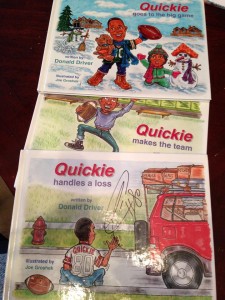 AE: You have written three children’s books and another one is scheduled to come out this year. What inspired you to write these books?
AE: You have written three children’s books and another one is scheduled to come out this year. What inspired you to write these books?
DD: What inspired me to write these books was when I was telling these stories to my son when he was two years old. He was lying in bed and kept asking questions. He would ask if I played sports and if I played football. I told him that I play football for a living. At two years old they might not understand that you are playing in the National Football League. I kept on telling him the stories of how everyone kept telling me I was too small to play football. I was too small. Choose another sport. You are going to get hurt.
One of my good friends said that I needed to start writing a children’s book. Every kid in the world is going through that. Either their mom is telling them, or their teacher, or a friend is telling, or an older sibling is telling them that. You need to put that in a book so a kid can understand that you can make the team. That is why I created “Quickie Makes the Team.” Quickie was a kid that nobody believed in that could play football, but he believed. He tried out for the team and made it. At the end of the book he wins the game for the team.
The second book was “Quickie Handles a Loss.” Regardless of what you may face in life, whether it is losing a job, failing a test, losing a loved one in your life, do not let that dictate how you live your life. Continue to strive and move forward. It only gets better. It doesn’t get worse.
Then I came out with “Quickie Goes to the Big Game.” As an NFL player the greatest milestone for a player is to make it to the Super Bowl. Quickie gets to go with his dad to a place where his dad has been dreaming for a long, long time to go to. That is the Super Bowl. That story is whatever you dream of, continue to dream. Your dream will come true. Dreams come true if you put the effort into it.
The book later this year is “Quickie Handles a Bully.” Everyone out there faces a challenge. Whether it is a kid getting bullied at school or an employee getting bullied at work by his boss, every single person is having that issue. I want my kids to know that it is not okay to be bullied. So I put that message in this book. You hurt bullies with kindness. You don’t have to fight back unless he or she puts their hands on you. That’s why I wanted to create this book. It can be a conversation.
May 5th
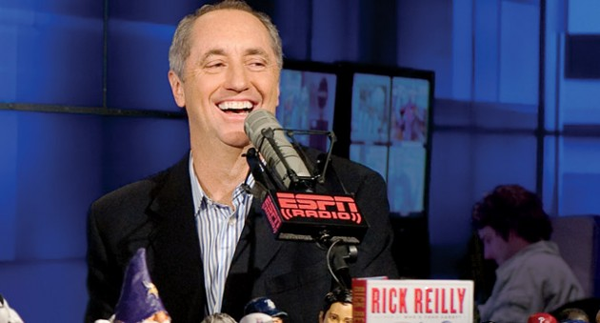
ESPN’s Rick Reilly Tells Us What To Expect From His New Book
Growing up in high school besides the text books and novels I had to read for school most of my reading material consisted of comic books. That was until I started reading Rick Reilly’s column in “Sports Illustrated.” Rick has a way of telling a story that perfectly intertwines sports and life. Rick has been voted NSSA National Sportswriter of the Year eleven times. He currently writes for ESPN, but will be stepping down from that role on July 1st.
On May 13 you can get his new book, “Tiger Meet My Sister: And Other Things I Probably Shouldn’t Have Said.” This book is a collection of his work that even has a postscript section after each story to let the reader know if anything has changed since he posted each story.
I had the pleasure to chat with Rick about his new book, how Muhammad Ali played many pranks on him, best and worst interviews, sports, and more.
Art Eddy: I am loving your latest book. The forward/obituary sections were amazing. I am guessing since you are a writer you may have written your obituary a few times right?
Rick Reilly: (Laughs.) When you have to write a weekly sports column, which I feel like I have been doing since I was 20, you just go through dozens and dozens of ideas every week. Sometimes they don’t work out. You kind of hide them. I have this file on my computer that has about 500 ideas. Out of those 500 ideas 300 of them have been started and then abandoned.
I have probably worked on my obituary about ten different times. I was thinking okay I got nothing else this week, so let me try the obituary. Finally I thought this would be the perfect forward because beginning July 1st I am giving up the sports column for 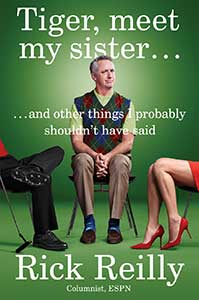 good. I am just going to write books. So I thought hell why not eliminate the middle man and write your own obituary. It was really fun. It was really fun to look back on your life and say it wasn’t that bad.
good. I am just going to write books. So I thought hell why not eliminate the middle man and write your own obituary. It was really fun. It was really fun to look back on your life and say it wasn’t that bad.
AE: The section where you talk about fortitude when small people act big was very inspiring. From all that you have seen which story will always stay with you?
RR: Over my career I have found that those are the stories that I like doing the best. When you write about small people doing big things and overcoming things. There was this kid I wrote about who refused to give up running for the cross country team. He was a high school kid. It took him 35 more minutes than his teammates because he had cerebral palsy. The right side of his body didn’t work. He kept falling. In cross country you are going over fields and streams.
His face was all scarred up from these falls. His parents begged him to quit. So did his coaches. He wouldn’t quit. Pretty soon his teammates would go out there and finish the race. Then they would go back a mile and a half and finish with him. Pretty soon the girl’s team started doing. Then the cheerleaders started doing it.
Then at the last meet that he ran the opposing teams did it. At the finish line it was a bunch of crying parents. That kind of column sticks with me. I would say that there are five of those in this book.
AE: You have a section in your book about how some of your articles got you into hot water. For those articles how do you make up your mind whether to publish a story or not?
RR: Truth. You try to tell the truth. Sometimes you fail and get it wrong. I think I have published over two million words in my 37 year writing career. So you are going to screw up. Especially if you are an idiot like me you are going to screw up a lot. So the times you regret the most is when you accidentally misquote someone. Or when you realize later when meet someone you didn’t paint the right picture of them.
Sometimes you get into hot water, but you would still do it again. I think of Sammy Sosa, who at the time around 1998, was saying that he couldn’t wait for drug testing. He couldn’t wait for steroid testing. He said, ‘I am going to show all you people  that my numbers are real.’
that my numbers are real.’
I said to him, ‘I found a drug testing lab ten minutes from Wrigley Field. You don’t have to wait for drug testing. Let’s do it now.’
He flipped out. He started screaming at me in Spanish. He started grabbing this baseball bat and threatening me. I was like hmm, someone doesn’t want to be tested. His point was about the (baseball players) union. It was sort of a mild post in a steroid story. He freaked out at the idea of being tested. As we know he did show up on a steroid failed test list. He shrunk by about 40 pounds as soon as he got out of baseball. His best friend was busted with 20 thousand dollars’ worth of steroids in the Dominican. I was in hot water for months over that, but I thought I was right.
AE: I have been a big fan of your work since I found your column in “Sports Illustrated.” Love the way you tell a story. How did you hone your craft as a storyteller?
RR: Thanks for saying that because I am 56 years old, but people come up to me like I invented the printing press. They will say, ‘I was 13 years old and that was the first reading I ever did. You taught me how to read.’
I am like come on. I am not “Dick meets Jane.” I was like you. The first really good reading I ever did was sports. It was a guy named Jim Murray. He was this great columnist for the “L.A. Times.” He wrote sentences that I have never seen before. They just jumped off the page and punched you in the nose. There were sentences and you would be like how did he do that?
I would read it over, over, and over again to see how he did it. It would be things like, ‘John Wooden is as square as a pan of fudge.’ Or things like, ‘Gentleman start your coffins.’ That is what he said once at the start of the Indy 500. This was a whole new way to write. That guy became my friend, my mentor, and my hero when I went to the “L.A. Times.” He said, ‘Make the writing 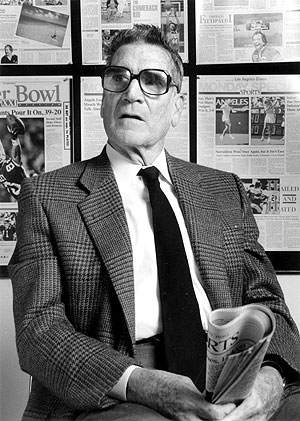 fun. There is no city ordinance. No one has to read you. They have got to want to read you.’
fun. There is no city ordinance. No one has to read you. They have got to want to read you.’
That was what stuck with me more than anything else. Make them want to read you. Make it fun. Don’t make it a job. That is how I tried to write from then on.
AE: Who has been the best person that you have interviewed and who has been the worst?
RR: Charles Barkley would be one through four. Then playing golf with Bill Clinton when he was the standing President was fascinating. I have never been around someone with that much charm, knowledge, and wit all wrapped in one. I know people think he is some kind of redneck hick, but this guy knew more about the world which I learned in four hours of golf. I thought he was really fascinating.
Another fascinating interview was with Mike Tyson. You didn’t know if you were going to get out of there with a punched eye or you were going to be his best friend or you were going to do crystal meth. You didn’t know if he was going to threaten you. You think anything could happen.
I always found him so fascinating because he was always so self-loathing. Yet in so many ways he was sort of an idiot savant. He knew more about Mao Tse-Tung and rebels in China and boxing, but he could hardly make his car payment.
So if you talk about most interesting interviews like Mohammad Ali when you would get him in the morning and he could still talk to you. He played tricks on you. One time he pretended to fall asleep during an interview with me. It was just me and him in this room. At that point I was like okay I guess I will just read this magazine. Two minutes later he dove across the couch and choked me. It was all a fake. So guys like that are things that I will never forget.
The worst. There have been so many bad interviews. Some people just start with a chip on their shoulder. Reggie Jackson started off that way. Sam Snead was terrible. What is funny is that some of these people who have never been interviewed are the worst. They say no comment. Dude you are really never going to be interviewed again so you better make a comment.
AE: Is there a person that you have tried to interview and to this day you are still trying to get?
RR: To this day and I can’t get him anymore was Johnny Unitas. The great quarterback would charge money for an interview. We weren’t ready to do it. Well I was ready to do it because I thought that alone was worth a column. That was a guy that I was never able to get. The companies that I worked for refused to do it. I can see why, but still. Wouldn’t it have been fascinating to interview Johnny Unitas and pay for the privilege?
AE: Recently you tweeted out that you are giving up your column at ESPN. How tough of a decision was that? 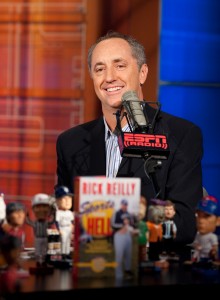
RR: Not tough. Not tough. I have been doing this for a living since I was 19 years old. It has always been sports. It has never been anything else. It is kind of like when a dog as an electric fence and finally the owner dies. The dog is like can I really leave this yard?
I could have left the yard about five years ago. I said okay I will go five more years and that is when I did this ESPN thing. I have been dying to try and write music, movies, politics, travel, and I want to do books. I have written 11 books. Three of them have been novels. I love the novels because the characters say stuff that you are laughing at the things that they are saying. And it is coming out of your fingers. So that is a really fun experience. We are going to live in Italy for six months. There is just a whole new life waiting out there for me. I am not dying. I am still going to write. I am certainly not going to write that much sports.
AE: Well maybe writing your obituary in this book might not have been the best thing since people might think you are dying.
RR: Yeah, they might really think that I am dead. A lot of them wish I were.
Apr 28th

Soccer Fans Get Ready To #PassTheLove
Mondelēz International, the makers of OREO, RITZ, TRIDENT, HONEY MAID and SOUR PATCH KIDS, unveiled an innovative and engaging new campaign which highlights the unique and personal ways that fans and consumers embrace soccer – and invites people everywhere to #PassTheLove.
Beginning this month and continuing as the U.S. Men’s National Team prepares for the world’s largest sporting event, these beloved cookie, cracker, candy and gum brands – collectively known as the Official Snacks of U.S. Soccer – will partner with soccer stars like Clint Dempsey, Alex Morgan and Omar Gonzalez to create a consumer movement where soccer enthusiasts across the country unite to #PassTheLove of the sport.
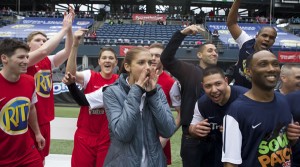 This bold, integrated campaign – the company’s largest multi-brand program to date – was designed to be sharable at its core and utilize real-time content, adaptive advertising, experiential events and ongoing consumer engagement to empower and reward consumers when they help celebrate the cheers, anthems, pageantry, rituals and all other elements that feed the spirit of soccer.
This bold, integrated campaign – the company’s largest multi-brand program to date – was designed to be sharable at its core and utilize real-time content, adaptive advertising, experiential events and ongoing consumer engagement to empower and reward consumers when they help celebrate the cheers, anthems, pageantry, rituals and all other elements that feed the spirit of soccer.
For complete details about the contest, including entry requirements, visit www.passthelove.com.
Apr 25th
